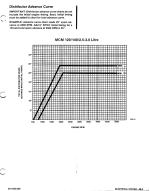82 baretta
Cadet
- Joined
- Feb 7, 2022
- Messages
- 10
Hi Everyone,
I didn't want to derail the other recent thread for using the Delco EST in an older 140 motor. Background info: Engine serial number is A395507 which should be an ~1986 motor. The spec is to be timed at 6-BTDC. I spliced into the choke 12V wire to provide power to the coil (no inline resistor). Engine is out of the boat and water is supplied via garden hose straight to the water inlet on the engine.
After warming up the motor I installed the jumper and applied 12V to the distributor. This put the Delco into "Base timing Mode". Making sure that the motor stayed between 650-700 rpm I set the base timing to 6-BTDC using the Timing advance in my timing light and matched the mark on the balancer to the Zero Mark on the timing indicator tab.
I removed the 12V first from the distributor and could hear it come out of base mode. Next I removed the jumper from the distributor and checked both the timing and also the rpm. Since the motor is on a stand and not in the water I have the idle set at 850 rpm. At this rpm the advance seems to be 22-BTDC, according to my timing light (when adjusted to 22 the timing marks line up at zero). This seems high though based on attached curve.
When increasing the throttle to above 2k the timing would go to 29-BTDC (again adjusted the advance on the timing light where the marks line up at zero).
Where I am confused is that I get the base timing is set at 6-BTDC, but how is this 6 truly subtracted from the 29-BTDC to get the total distributor spark to get the timing curve specified for the motor? The timing light doesn't "know" that there is a base timing set, it only sees the actual advance correct?
Unfortunately, since the EST can be added to all of the variations of the 3.0 motors there is all sorts of conflicting info out there.
Thanks for the help, sorry about the book!
Bryan
I didn't want to derail the other recent thread for using the Delco EST in an older 140 motor. Background info: Engine serial number is A395507 which should be an ~1986 motor. The spec is to be timed at 6-BTDC. I spliced into the choke 12V wire to provide power to the coil (no inline resistor). Engine is out of the boat and water is supplied via garden hose straight to the water inlet on the engine.
After warming up the motor I installed the jumper and applied 12V to the distributor. This put the Delco into "Base timing Mode". Making sure that the motor stayed between 650-700 rpm I set the base timing to 6-BTDC using the Timing advance in my timing light and matched the mark on the balancer to the Zero Mark on the timing indicator tab.
I removed the 12V first from the distributor and could hear it come out of base mode. Next I removed the jumper from the distributor and checked both the timing and also the rpm. Since the motor is on a stand and not in the water I have the idle set at 850 rpm. At this rpm the advance seems to be 22-BTDC, according to my timing light (when adjusted to 22 the timing marks line up at zero). This seems high though based on attached curve.
When increasing the throttle to above 2k the timing would go to 29-BTDC (again adjusted the advance on the timing light where the marks line up at zero).
Where I am confused is that I get the base timing is set at 6-BTDC, but how is this 6 truly subtracted from the 29-BTDC to get the total distributor spark to get the timing curve specified for the motor? The timing light doesn't "know" that there is a base timing set, it only sees the actual advance correct?
Unfortunately, since the EST can be added to all of the variations of the 3.0 motors there is all sorts of conflicting info out there.
Thanks for the help, sorry about the book!
Bryan




















